|
Tradewind Flying Club

where the pilots are just over the hill .............................from La Lamentine ! |
What do Tradewind pilots do to relax after line, bush and sea flying? Yes they probably do do that and then they go to the TFC
Now finish your drinks and let's go pre-flight the aircraft ............
NOTAM: Notice to Airmen and we use the term loosley
Rick hasn't finished cutting the grass yet but when he has there will be a nice new airfield
'just over the hill from La Lamentine'
While he refills the mower you can fly the first aircraft out of the paintshop to and from wherever you like |
|
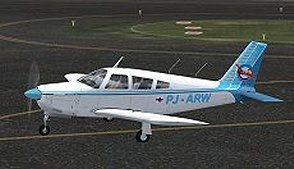
PJ-ARW for FS9
PJ-ARW for FSX
|
Piper Pa28R-200 Arrow II ~ CLS
|
The PA-28R originally began life as a retractable undercarriage variant of the PA-28 Cherokee.
The original PA-28R-180 Cherokee Arrow was a relatively simple adaptation of the existing PA-28-180 Cherokee D, but incorporated electro-hydraulically operated retractable undercarriage (complete with a self lowering system that safeguarded against the pilot failing to do so, automatically lowering when airspeed reached 170km/h/91kt and a certain engine manifold pressure), a fuel injected version of the PA-28-180's O-360, a constant speed propeller and an increased max takeoff weight.
Production switched later to the more powerful 150kW (200hp) IO-360-C1C powered PA-28R-200 Cherokee Arrow II. Changes included the same 12.7cm (5in) stretched fuselage introduced on the Cherokee Challenger and Cherokee Charger, with greater rear legroom and baggage capacity, plus larger horizontal tail and dorsal fin fillet.
The PA-28R-201 Arrow III first flew in September 1975, and was introduced from 1976. The major change (also introduced on the fixed undercarriage PA-28s at that time) was a new longer tapered span wing, while the maximum takeoff weight was increased. The turbocharged PA-28R-201T was also offered.
The PA-28RT-201 and -201T Arrow IV introduced a new all moving T-tail. Production of the Arrow IV ceased in 1982, and resumed again in 1989, but ceased once more in 1992. Instead Piper returned the conventional-tailed Arrow III back into production. Very small numbers were built in the early 1990s while Piper was under bankruptcy protection. Since the emergence of New Piper Inc in 1995 the Arrow III has been part of the expanded Piper line-up, although only small numbers have been built.
|
|
|
Other Essential Files:
|
Repaint by JF
|
|
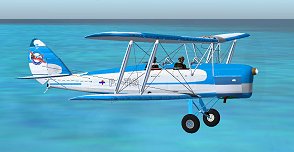
PJ-TIG for FS9 (Warwick Carter)
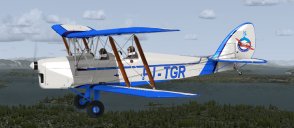
PJ-TGR for FSX (Ant's Airplanes)
|
De Havilland DH82a Tiger Moth
|
One of the most famous biplanes in the world, the much loved Tiger Moth was produced in large numbers for WW2 service as a basic pilot trainer, and today is a highly sought after private aircraft.
The DH.82 Tiger Moth is a development of de Havilland's successful and famous Moth line of biplanes. Based on the DH.60T Moth Trainer, the Tiger Moth first flew on October 26 1931. Like the earlier Moth and Gipsy Moth the new aircraft was a two place biplane and featured a Gipsy Major engine and wooden and metal construction. Difficulty bailing out in an emergency was a problem with the earlier aircraft, and this was addressed through repositioning the struts forward of the front cockpit. To counter centre of gravity problems that would have resulted, the wings were given a modest sweepback angle.
The DH.82 attracted the interest of Britain's Royal Air Force, and the first of what would ultimately be several thousand Tiger Moths entered service with the RAF in 1932. Initial production DH.82s were powered by 80kW (120hp) engines, while the DH.82A introduced in 1937 featured a 97kW (130hp) engine, and was the most produced version. Most prewar production was against military orders, although some civil machines were built.
As Britain's standard basic pilot training aircraft, production of the Tiger Moth increased greatly during WW2, and some 4000 were built in the UK. During the war large numbers were also built in Canada (as the DH.82C with a Gipsy Major IC or 120kW/160hp Pirate D.4 engine), Australia and New Zealand.
Postwar, surplus military Tiger Moths proved extremely popular with private owners. Many examples were converted for agricultural work, particularly in Australia and New Zealand, while small numbers of the four seat Jackaroo conversion were built from 1957.
Today the Tiger Moth remains very popular, and in some countries the Tiger Moth populations are in fact growing as retired machines are restored and returned to the air.
|
|
|
Other Essential Files:
|
Repaints by JF
|
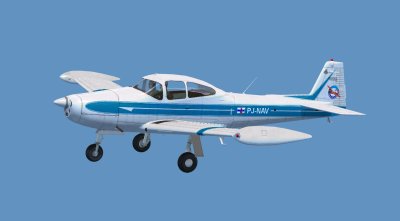
PJ-NAV for FSX
|
Ryan Navion B 300HP engine
The Navion was designed in the late 1940s and built by four different companies through until the mid 1970s.
The company responsible for the original Navion was North American Aviation (famous for its WW2 P51 Mustang fighter). The end of WW2 saw massive military contracts cancelled en masse and so North American designed the original four seat NA145 to diversify out of military production. The NA145 Navion was powered by a 140kW (185hp) Continental and North American built more than 1100 in 1946 and 1947. North American also built a number of L17 observation aircraft based on the Navion for the US military.
Production and development of the Navion then transferred to Ryan. The standard Ryan production model was the Navion 205 or Navion A, which differed from the North American NA145 in that it was powered by a 155kW (205hp) Continental E185. More than 100 were built between 1948 and 1950. Ryan also built a few hundred Navion Super 260s or Navion Bs between 1950 and 1951, these aircraft were powered by a 195kW (260hp) Lycoming GO435. In addition Ryan also built almost 200 L17s (some saw military service in Korea).
The basic Navion design resurfaced in 1960 when the Navion Aircraft Company developed a five seater variant called the Rangemaster. The Rangemaster was powered by the same 195kW (260hp) Lycoming engine as the Navion Super 260, but instead of the rear sliding canopy of earlier Navions, the Rangemaster had a reprofiled, more streamlined five seat cabin. Later production Rangemasters had a smaller tail.
The Rangemaster was last built by the Navion Rangemaster Aircraft Corporation between 1974 and 1976 in improved G and H form.
Camair in the USA also converted a small number of Navions of various models to twin engine configuration, the first flew in 1953.
|
|
Other Essential Files:
Sim-Outhouse Navion
|
Repaint by JF
|
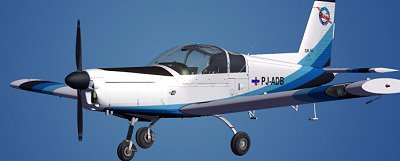
PJ-ADB for FSX
|
Zlin-142 - PWDT
This series of two seat trainers and four seat light aircraft was initially developed to replacement for the successful Zlin Trener.
The initial Z 42 was developed during the mid 1960s and seats two side by side. It flew for the first time on October 17 1967. The improved Z 42M meanwhile introduced a constant speed propeller and the larger tail developed for the Z 43 four seater, and replaced the Z 42 in production in 1974.
Development of the two seat line continued with the further improved Z 142, which flew for the first time on December 29 1979. Changes introduced included a larger cockpit canopy and faired undercarriage. The Z 142 remained in production in Z 142C form to the mid 1990s. The latest two seater of this family to be developed is the 150kW (200hp) Textron Lycoming AEIO360 flat four powered Z 242 L. Changes aside from the engine include a three blade constant speed prop and revised engine cowling profile. First flight was on February 14 1990.
Development of the four seat models, the Z 43 and Z 143, has followed that of the two seaters. The Z 43 appeared a year later than the Z 42, flying for the first time on December 10 1968. The Z 42 and Z 43 share the same basic airframe, but differ in that the Z 43 features a larger and wider cabin with seating for four, and a more powerful engine. The current Z 143 L flew for the first time on April 24 1992, and is similar in structure to the Z 242, but again differs in having a larger cabin with seating for four and a more powerful Textron Lycoming O-540 engine. |
|
Other Essential Files:
|
Repaint by JF
|
|





